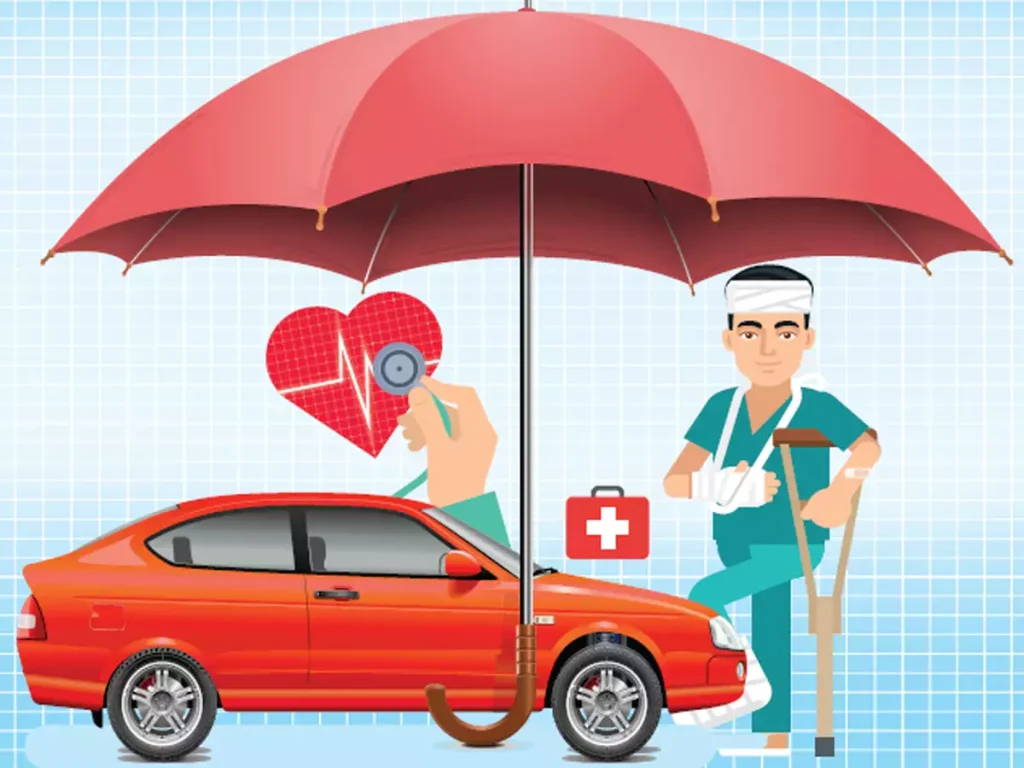All About Personal Accident Insurance
Personal accidents can happen at any time and often result in unexpected physical and financial consequences. In such situations, having personal accident insurance can provide a crucial safety net. This comprehensive guide aims to shed light on personal accident insurance, explaining what it is, why it’s essential, how it works, and what factors to consider when choosing a policy. By the end of this essay, readers will have a thorough understanding of personal accident insurance and its significance.

Understanding Personal Accident Insurance
1.1 Definition and Purpose Personal accident insurance, also known as accident insurance or accidental death and dismemberment (AD&D) insurance, is a type of insurance policy designed to provide financial protection in case of accidents resulting in injury, disability, or death. Its primary purpose is to offer financial support to policyholders or their beneficiaries during challenging times.
1.2 Key Features
- Coverage for accidental injuries: Personal accident insurance covers a wide range of accidents, including but not limited to, car accidents, slips and falls, sports-related injuries, and more.
- Flexible payout options: Policyholders or their beneficiaries can receive lump-sum payments or regular disbursements based on the severity of the injury.
- Worldwide coverage: Many policies offer coverage both domestically and internationally, providing peace of mind while traveling.
- No medical exams: Unlike some other types of insurance, personal accident insurance often does not require a medical examination for coverage.
Why Personal Accident Insurance Matters
2.1 Financial Protection Personal accident insurance is crucial because it provides a financial safety net during challenging times. Medical bills, rehabilitation costs, and other unforeseen expenses following an accident can be overwhelming. Having insurance ensures that these financial burdens are lessened, allowing policyholders to focus on recovery.
2.2 Supplement to Health Insurance Even with comprehensive health insurance, policyholders may still face out-of-pocket expenses following an accident. Personal accident insurance can bridge these gaps by covering expenses that health insurance may not, such as ambulance fees, deductibles, and home modifications.

How Personal Accident Insurance Works
3.1 Policy Coverage Personal accident insurance policies can vary widely in coverage. It’s essential to review the terms and conditions carefully. Coverage may include:
- Accidental death benefits
- Permanent total disability benefits
- Loss of limbs or sight benefits
- Temporary total disability benefits
- Medical expense coverage
Accidental Death Benefits: This is a fundamental component of personal accident insurance. In the unfortunate event of your death due to an accident, your beneficiaries will receive a lump-sum payout. The benefit amount is specified in the policy and varies based on the policy’s terms and your chosen coverage level. It serves as financial support for your loved ones during a difficult time, helping them cover immediate expenses and maintain their financial stability.
Permanent Total Disability Benefits: If an accident results in your permanent total disability, such as the loss of both limbs or complete blindness, the policy will provide benefits. These benefits help you cope with the life-changing consequences of the accident. The payout can be used for medical bills, rehabilitation, home modifications, or any other necessities that arise.
Loss of Limbs or Sight Benefits: Personal accident insurance typically includes coverage for specific losses, such as the loss of limbs (arms or legs) or sight (partial or total). In such cases, you will receive benefits to assist with medical costs, prosthetic limbs, or any required modifications to your living environment to accommodate the disability.
Temporary Total Disability Benefits: In scenarios where an accident temporarily disables you and prevents you from working or pursuing your regular activities, the policy provides benefits for this period. These benefits replace a portion of your lost income, ensuring you can cover daily expenses while you recover.
Medical Expense Coverage: Personal accident insurance often includes coverage for medical expenses resulting from the accident. This can encompass hospital bills, surgical procedures, doctor’s fees, prescription medications, and rehabilitation costs. Having this coverage can significantly ease the financial burden associated with medical treatment following an accident.
Additional Benefits: Some personal accident insurance policies may offer additional benefits or riders that policyholders can opt for. These might include coverage for specific types of accidents, such as accidents during travel, sporting events, or while engaging in high-risk activities.
Understanding the specific coverage offered by your personal accident insurance policy is essential to make an informed decision. Policies may have different terms, conditions, and payout structures, so it’s crucial to review the policy documents carefully and ask questions if you’re unsure about any aspect of the coverage.
3.2 Filing a Claim In the event of an accident, policyholders or their beneficiaries must notify the insurance company promptly. The insurance company will provide guidance on the required documentation and claim process. Accurate and timely filing is crucial to ensure a smooth claims experience.
Choosing the Right Personal Accident Insurance
4.1 Assessing Your Needs Before purchasing personal accident insurance, it’s essential to assess your specific needs. Consider factors such as your occupation, lifestyle, and existing insurance coverage. This assessment will help determine the appropriate coverage levels.
4.2 Comparing Policies When choosing a policy, compare offerings from multiple insurance providers. Pay attention to coverage limits, premium costs, and any exclusions. Look for policies that align with your needs and budget.
4.3 Understanding Exclusions Personal accident insurance policies typically have exclusions, which are situations or circumstances not covered by the policy. Common exclusions may include injuries resulting from illegal activities or pre-existing conditions. Understanding these exclusions is crucial to avoid surprises when making a claim.

Conclusion
In conclusion, personal accident insurance is a vital financial tool that provides essential protection during unforeseen accidents. This guide has explored the definition and purpose of personal accident insurance, its key features, and why it matters. Additionally, it explained how personal accident insurance works, from policy coverage to the claims process. Lastly, we discussed essential considerations when choosing the right personal accident insurance policy.
Having personal accident insurance can offer peace of mind and financial security, ensuring that individuals and their loved ones are well-supported in times of adversity. It is a valuable addition to one’s overall financial planning and risk management strategy.